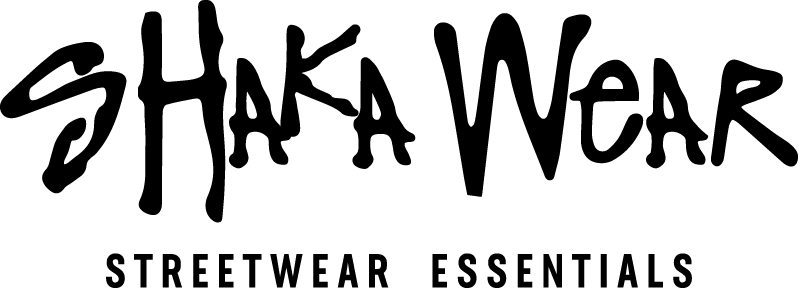Getting Started With Heat Transfer Vinyl T-Shirt Printing

Posted by AllDayShirts on to Printing Techniques.
Did you know that, according to Finances Online, the number of US-based online shoppers is expected to reach over 230 million people this year? Additionally, 8 out of every 10 Americans now shops online.
If you’ve been thinking of taking advantage of these e-commerce trends by starting a t-shirt printing business, it’s a great time to do it.
However, you might not be sure about what steps to take to get your heat transfer vinyl t-shirt business off the ground. You might be wondering:
“What is heat transfer printing, exactly?”
“What supplies do I need to start designing, printing, and selling my t-shirt designs from home?”
“What’s the process for printing t-shirts?”
If you don’t know the answers to these questions, you might be feeling a bit overwhelmed.
That’s why we’ve put together this guide. In it, you’ll find out everything you need to know about the heat transfer vinyl t-shirt printing process.
Finally, you can create great designs and make some money from home. Read on to learn more.
Heat transfer vinyl printing is a transfer printing technique. Transfer printing involves printing something on a surface that isn’t a textile, after which that print is transferred, in a separate process, to the fabric. The first step is done with vinyl.
When the second part, the transfer, occurs, the vinyl that has been printed out is then sealed onto a piece of fabric. This is done with a heat press.
As you can see, this is a relatively straightforward process that makes it easy for you to print off your design and directly transfer it to a t-shirt you then sell.
There are many advantages when it comes to using the heat transfer vinyl process. First of all, storage is easier than when you’re printing designs on paper. It’s also cost-efficient if you’re shipping out small delivery orders (especially compared to DTG printing).
Additionally, the production time is shorter than with DTG (as long as your orders are 250 or less). You also don’t need to be highly skilled, which means that once you’ve gotten some practice your printing efforts will be successful.
If your designs are complex, it’s much easier to print on paper first, after which you transfer the design to the shirt. (Imagine trying to do it directly on the shirt!)
There’s also a huge variety of artistic decisions you can implement with heat transfer vinyl printing. You can do full-color printing, and play with many types of textures and effects, including velvet, metallics, and fluorescents.
If you want to personalize many of your designs (for customers looking for customization, for example), you can do this easily with this process.
You can buy many of the same garments, playing with the designs that you transfer to them.
There are a variety of different supplies you need in order to do your t-shirt printing successfully. These include a heat press machine, vinyl cutter, heat transfer vinyl, and t-shirt garments (as well as accessories). Let’s review these in detail now.
If you want to start your own heat transfer vinyl t-shirt printing business, the first thing you need to do is buy a heat press machine. After all, this is the technology you’ll be using to make the pressing of your prints onto t-shirts possible in the first place.
In order to choose the right heat press machine for you, you have to ask yourself the right questions. Ask yourself:
- “How big are the items that I’m planning to create?”
- “Am I planning on focusing on the usual small to XL range of t-shirts?”
- “Do I want to offer larger t-shirt ranges?”
- “How much room do I have in my space for the heat press machine?”
In addition, you’ll want to ask questions related to the specific type of machine you would end up using. This relates to both the size of your budget as well as the size of your space. Some of these questions include:
- “Does a swing-away or clamshell-style work best for me?”
- “How much do I expect to produce?”
- “Will I need to upgrade after a year of using my first machine?”
Once you’ve asked yourself these questions, you can create a list of all your answers. This will help you choose the right press and know what direction your business will eventually go in.
In addition to thinking about size, remember to select a high-quality press.
The next piece of technology you’ll want to invest in is a vinyl cutter. This machine is specifically made for CAD cut vinyl printing. What you need is a long-lasting, durable vinyl cutter machine that can handle all of your orders, every day.
To find the right CAD cut vinyl cutter for you, you’ll want to check out user reviews, warranties available, product support, and the reputation of the brand you’re looking into.
If you’re just starting out, a small, simple vinyl cutter can be enough for you, as many of these come with design software and an art library.
However, if you want to have a larger business from the get-go, you should go for a larger vinyl cutter.
Whatever vinyl cutter machine you end up buying, make sure that it’s compatible with software such as Photoshop and Adobe Illustrator.
When buying heating transfer vinyl, it’s best to start out by buying the colors you know you’ll use the most. You should also invest in the most popular colors: red, navy, white, and black. Once you start establishing your brand and getting more client orders, you can buy more.
There are so many options out there, it’s easy to get excited and buy many different types. However, just buy a few for now, after which you can add to your arsenal.
When choosing the right t-shirts for heat transfer vinyl, you need shirts that can handle different levels of time under the press, temperature, and pressure. You need shirts that are specifically designed for the heat transfer vinyl process.
At AllDayShirts, shirts are specifically made for HTV. There are three options available, 100% cotton, 50%/50% cotton/polyester, and 100% polyester. All of these items can be used with a heat press.
The best Heat Press Printing shirts available are the:
- Gildan Adult Heavy Blend 8 oz 50/50 Hood
- Gildan Adult Heavy Blend Adult 8 oz 50/50 Fleece Crew
- Youth Heavy Cotton 5.3oz T-Shirt
- Gildan Toddler Heavy Cotton 5.3 oz. T-Shirt
- Gildan Adult Heavy Cotton 5.3 oz T-Shirt
- Gildan Womens Heavy Cotton 5.3 oz T-Shirt
- Gildan Adult Performance® Adult 5 oz. T-Shirt
- A4 Sublimation Performance Tee
- Next Level Women's Ideal T-Shirt
- Next Level Women's Ideal V
- Next Level Women's Ideal Racerback Tank
Once you have all the equipment and t-shirts necessary for completing the heat transfer vinyl process, it’s time to get started. There are several steps involved in the HTV process, including creating the design, using the right design software, and more.
When it comes to creating your design, there are many ways you can go about creating the right design to sell to your customers. If you’re using CAD-cut vinyl, you will want to use elementary vector shapes, because they need to be processed correctly by your computer.
When creating the design, you should save the original file in a high-quality resolution, such as 300 dpi. You’ll want to choose Pantone colors. As for the file type, you should save it as a PDF, EPS, or AI.
Remember to do the artwork in the actual size you’ll be printing, and avoid using shades or gradients.
In order to get the best results, it helps to invest in the right design software. Some great options include Adobe Photoshop, Adobe Illustrator, GraffixPro Studio, InkScape, and CorelDraw. To decide which one is right for you, think about what type of designs you’ll do.
Then, check to see that the software you choose can handle the designs you want to make.
Once your design is ready, it’s time to print it off. Put the paper made for HTV in your cutter machine or printer. If you need to, adjust the graphics so that they’ll match up with the image size you want to print.
When printing, it’s smart to use heat transfer paper that’s professional. This means your design, once printed and set into the shirt, will be high-quality. It won’t peel, bleed, or fade.
There are three different types of technology you can choose from when printing your design off: sublimation printing, DST, or CAD cut vinyl.
Once you’ve printed your design, it’s time to cut it out. This is where your vinyl cutter machine will come in. When it’s in the machine, it will detect the medium and then cut it into the graphic shape you’ve chosen.
After the print is cut, take a look at it carefully to make sure it’s cut the right way.
You’ll also want to remove any unwanted parts with a weeder tool. You can make your design more precise with this type of tool, and make any additional changes or fix errors, too.
Now, it’s time to apply the vinyl to the shirt. Put the shirt into the heat press machine, making sure that it’s straight and not wrinkled at all. You also want to make sure your graphic is in the center since it might come out crooked otherwise.
Once everything is correctly in place, you’ll use the heat press. Remember that the appropriate temperature varies depending on the type of t-shirt material you have. That being said, a general rule of thumb is that between 155 to 180 Celsius works.
If it’s too low or too high, you can end up messing up the artwork or burning your t-shirt. If you buy a garment made for HTV, it should come with instructions telling you which temperature to use.
So, use the proper heat temperature and leave the shirt inside the heat press for as long as directed.
Of course, if you’re using an iron, then you will have to be a little more careful, ironing evenly and paying attention while you’re ironing the design into the t-shirt. This may take a bit of practice, but eventually, you’ll get the hang of it.
By using the right tips, you’ll be more successful, sooner. One of our tips is to create a center line. This way, you won’t have to worry about using a ruler. To do this, fold the t-shirt in half. Once you’ve done this, the line where you folded the shirt will tell you where to put the design.
It’s also smart to create negative space. Too often, designers want to fill their t-shirts with designs. However, it will actually look more professional if you leave room around the design you press into it.
Finally, have fun and don’t second guess yourself. You’ll improve over time, and eventually, you’ll have a recognizable brand that your customers love.
- Christmas Fun Starts with Custom Hoodies & Crewnecks Using DTF Printing
- Thanksgiving DTF Apparel: Create Cozy, Colorful, and Custom Looks This Holiday Season
- Halloween DTF Apparel: Create Spooky Custom Looks with Jerzees 562 and 996 from AllDayShirts.com
- The Ultimate Guide to Soft Style Gildan Fleece: Comfort, Style, and Value for Every Wardrobe
- Why Acrylic Beanies Are a Unique Challenge
- Jerzees Fleece: The Perfect Blend of Comfort, Style, and Value
- Back-to-School DTF Printing: The Ultimate Guide to Custom Apparel for Students and Schools
- Image Enhancer for DTF Printing: How to Unlock Sharper, Brighter, and More Professional Prints
- How to Apply UV DTF: The Complete Step-by-Step Guide
- Introducing Print-on-Demand Hats: Featuring the Richardson 112, Otto 5-Panel Mid Profile Cap & High Crown Mesh Back Trucker



























